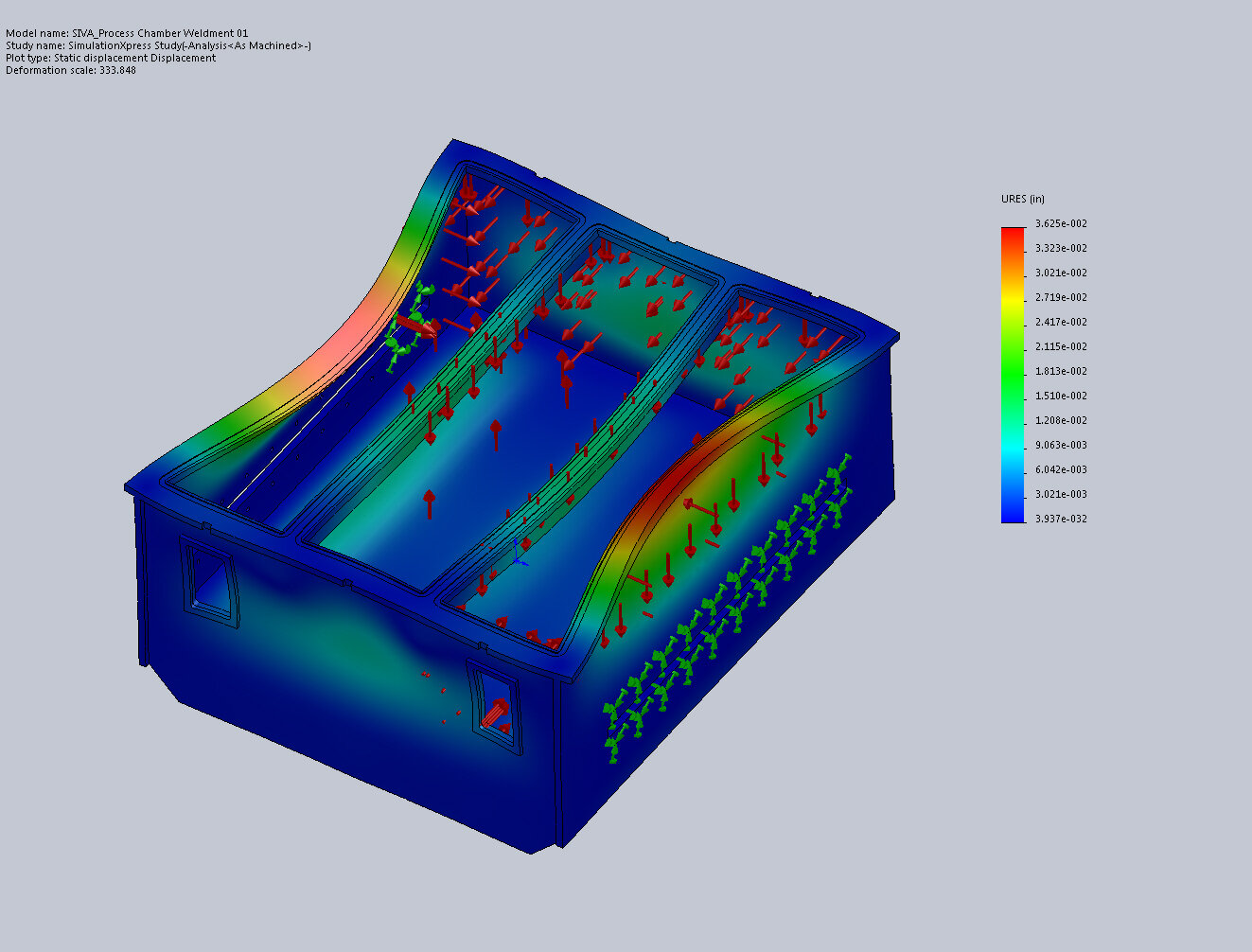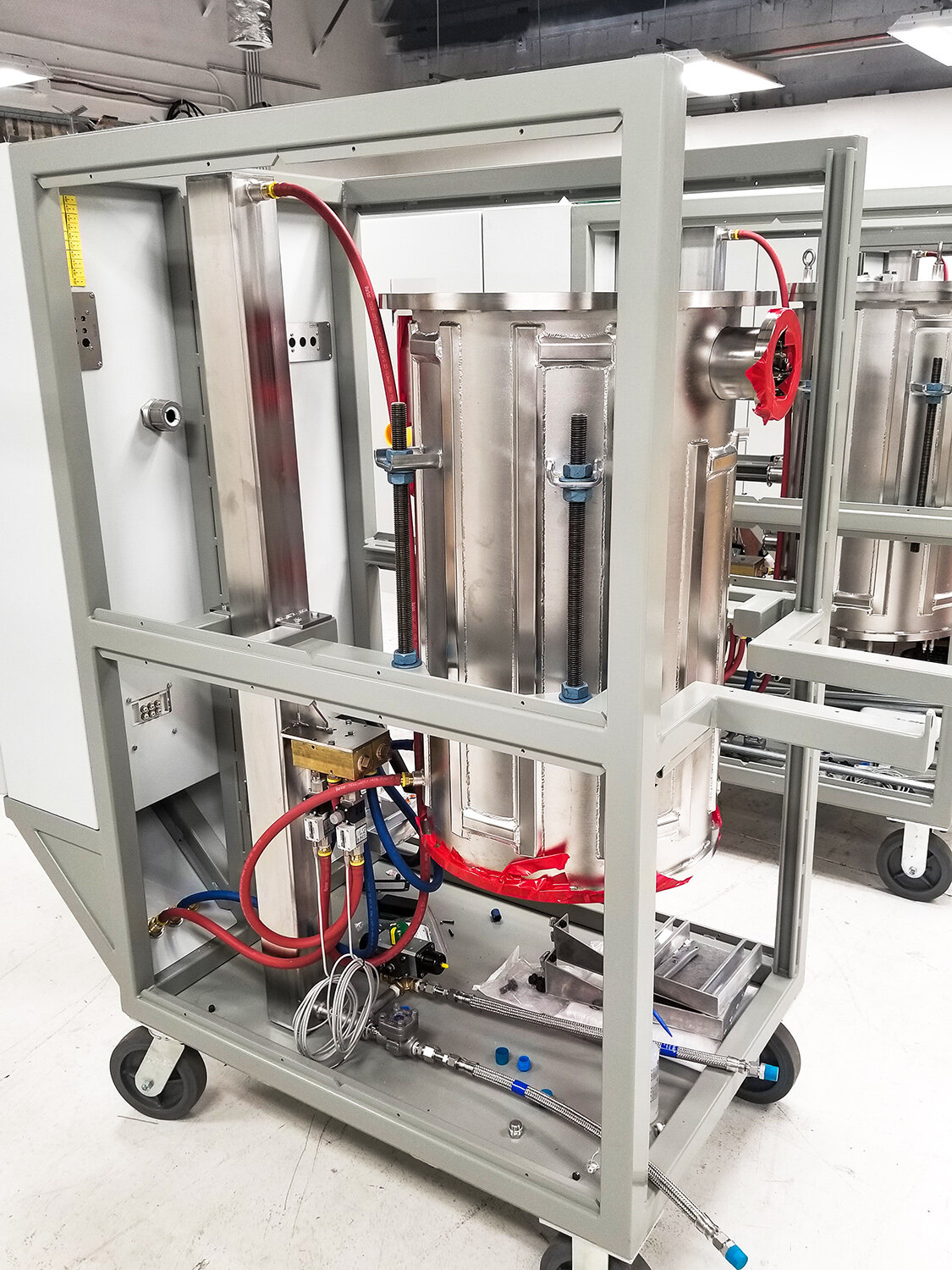Jumping off a cliff to build a semiconductor GW factory CIGS line while falling
The JuMP
A Startup company in the CIGS solar market jumped off a cliff and started to build while falling. Meaning they rapidly needed to manage time, extend knowhow, expertise, and experience. They reached out to Marion to propose a pilot production prototype tool that would be used as a demonstrator to secure further growth. A Blue-Sky machine build with large area coating using a Selenium source. The client was very experienced but needed support to model the system, and rapidly de-risk such a large project. The proposed deposition tool would use a large area evaporation of Selenium as part of the semiconductor solution, but being corrosive with condensation temperatures of ~200 degrees Celsius, the high process temperature would require a unique engineering solution for integration to the tool and deposition source hardware.
FEA and Thermal modelling
The Constraints - No Parachute
In such a project, cash flow management was important, while the size of the large area deposition and complexity of the thermal evaporation zone were significant technical challenges to overcome. Having to build fast, procurement lead times were also critical for sourcing to maintain project milestones.
To de-risk the project a prototype proof of concept tool would be built first, allowing the start-up company to progress to larger growth rounds to build a high-volume production tool with the proven demonstrator capability.
There was just one catch - a Selenium source integration of this size under such critical specifications had never been done before and other vacuum equipment manufacturing providers didn’t want to touch it.
The Expertise - A Force Multiplier for Success
To accelerate design and build aspects of the tool they outsourced for additional talent, needing:
- PVD experts and a design engineering team that could speak their technical language.
- Speed and flexibility
- Cost efficiency
- Skills in transitioning from prototype machine builds into production tooling.
- Design for Manufacturability to be made quickly and effectively
While the customer had expertise in Copper sources and a specification for what they needed, a large area Selenium evaporative source the the desired specification had never been integrated into a system before or was available on the market. In fact it was so large, that the final solution would need a bespoke heavy duty cart to load it into the tool.
High Quality Design
Built using skilled craftsman
“The ingenuity of the Selenium source build kept us on track and on to the next growth phase”
This was no small feat as most of the design work was around the design of the massive Selenium source and managing its thermal envelope. This took extensive FEA simulation on source design and latent heat of condensation considerations, such as thermal considerations of the melt pool to reduce risk of defects in the semiconductor material deposited. It required the right delivery and control systems to manage the evaporation, while having to remain portable for service and maintenance.
Design for manufacturability
Allowed a quick and efficient build
The Solution - Cost effective & Performed to Spec
The solution was effectively a cart of radiation shielding on a complex 3D geometry source assembly, like an oven within an oven. With Selenium having a high vapor pressure and being corrosive, it typically requires Stainless Steel materials to withstand it, particularly with its condensation temperature at ~200°C. Any surface in contact therefore needs protection from the corrosion since the chamber walls will be closer to ~35C while the internal process temperature is several hundred degrees Celsius. Through novel design of heating, shielding, and vapor control systems the system was able to withstand process conditions while being mobile, maintainable, and controllable as a set of sources.
A few key successful design features were the rapid heat-up and cool-down times along with a high production delivery rate. When systems this size normally take a day to cool down, the design provided a 10X improvement over industry standard.
The Happy Ending
The two R&D pilot sources delivered allowed the company toward further success and led to repeat orders for multiple sources. If you need a force multiplier for your business, then contact our innovative design and integration team.





